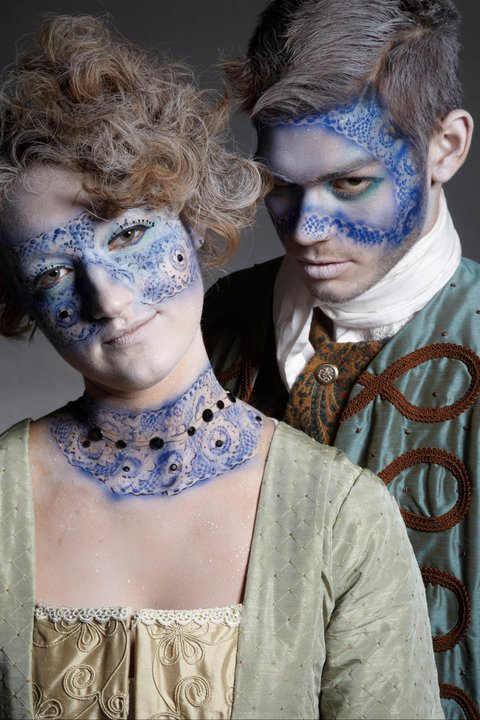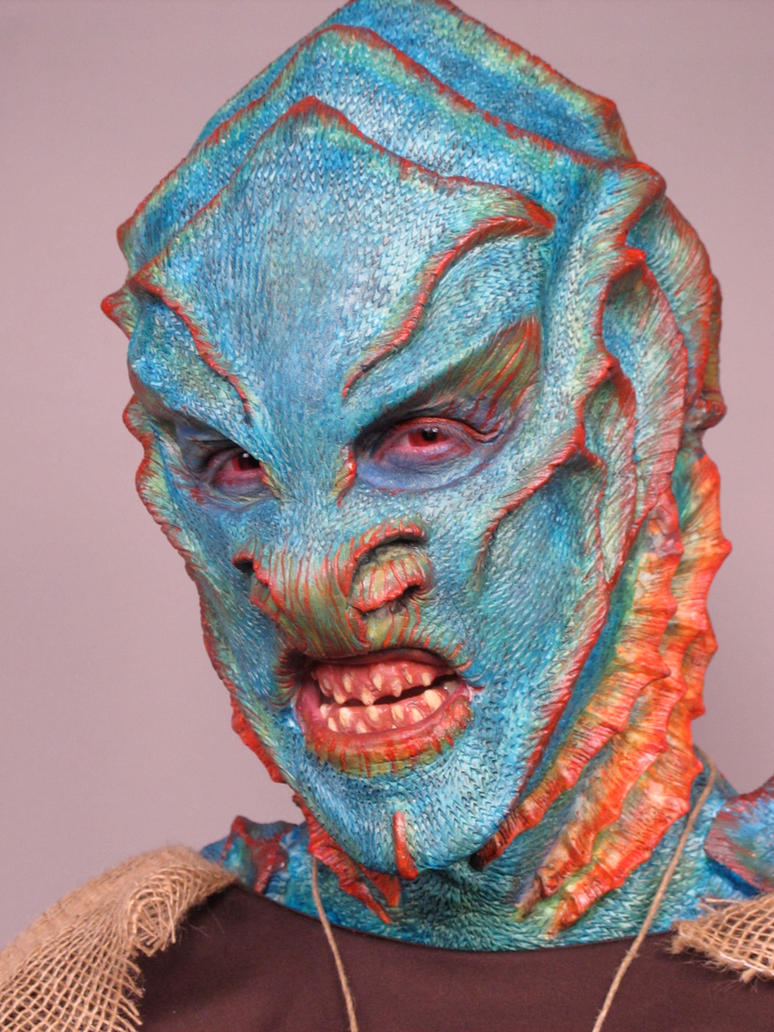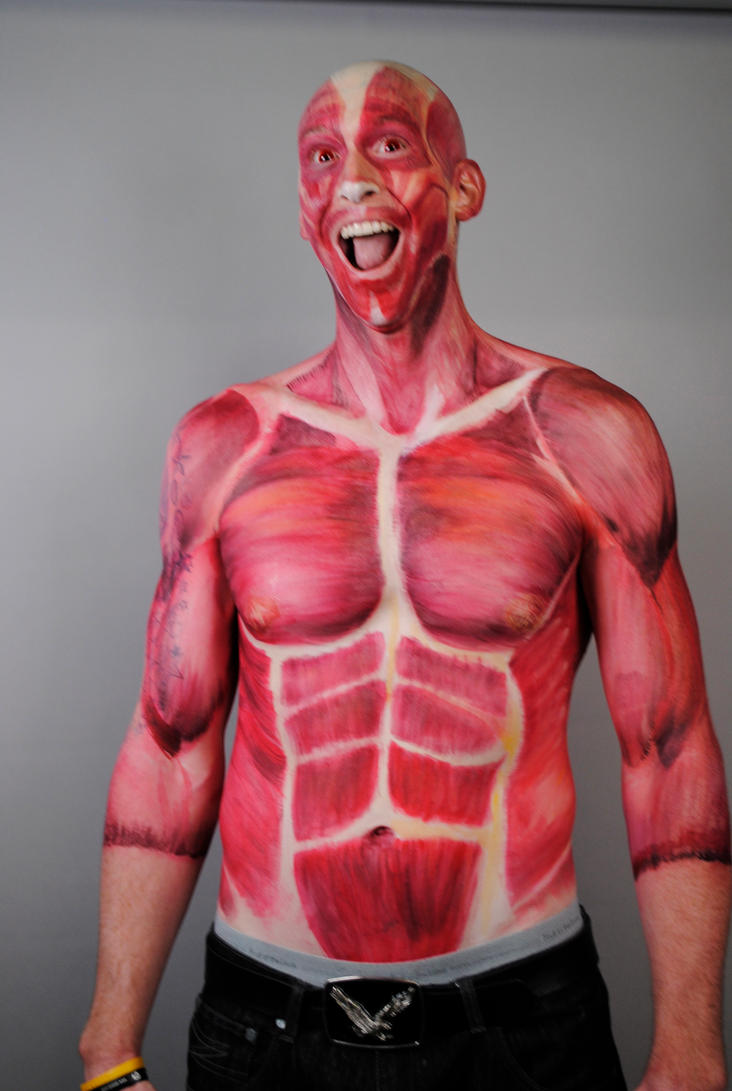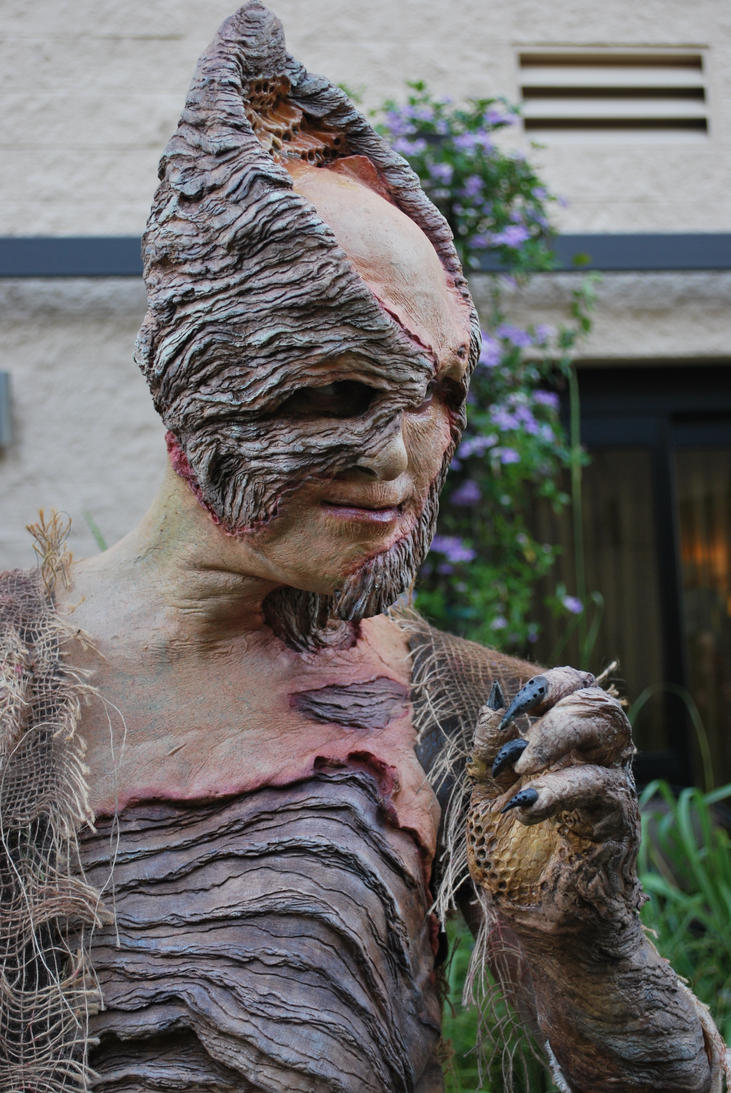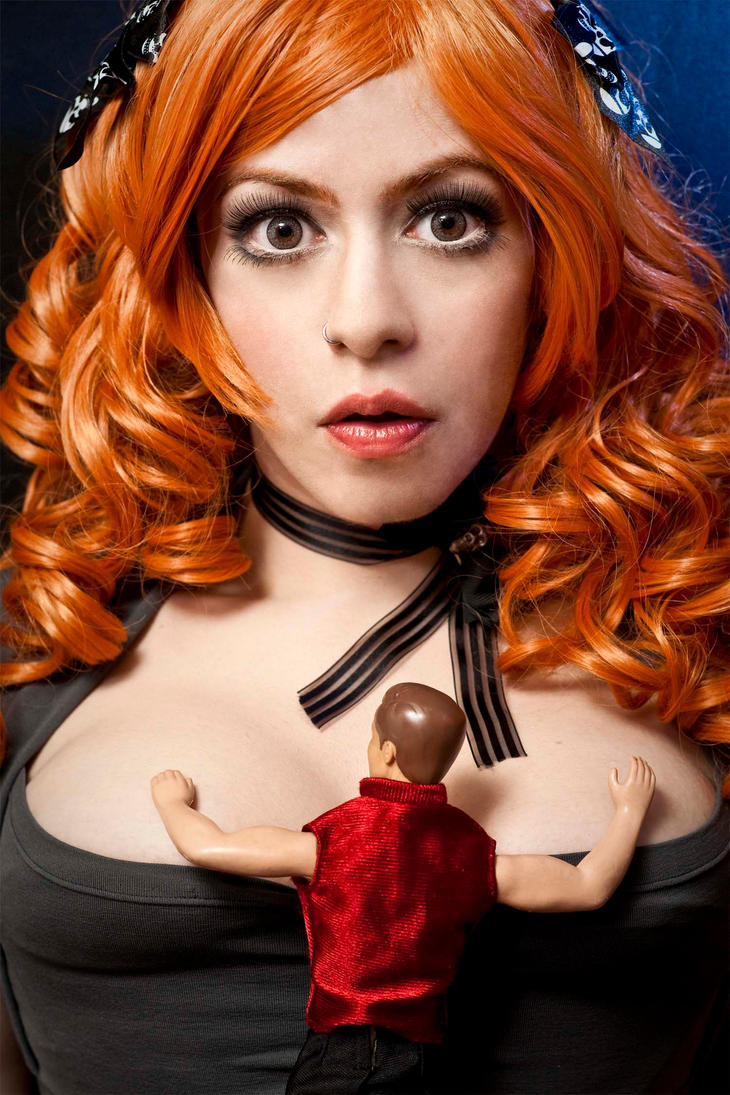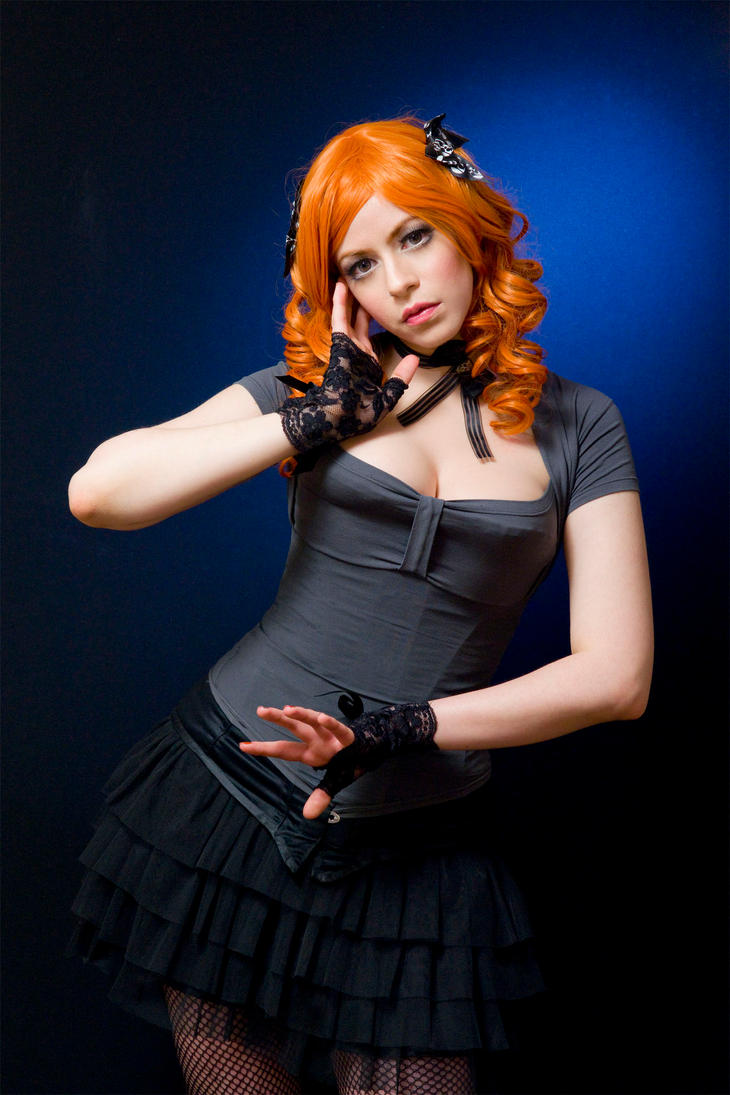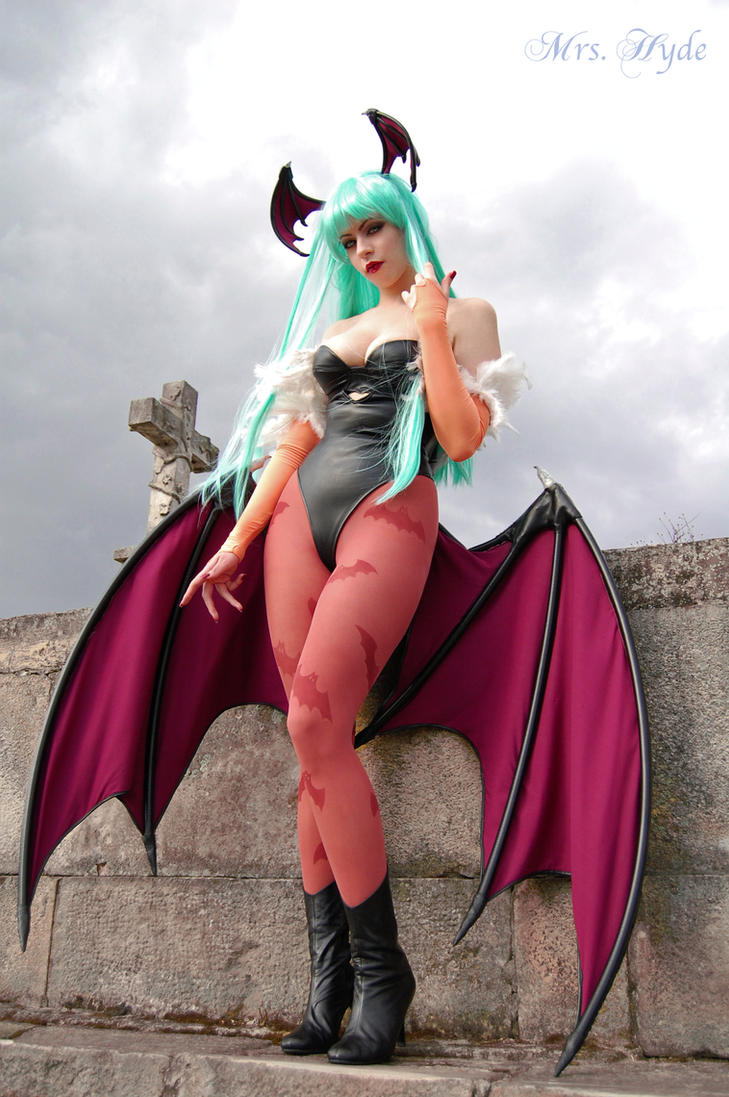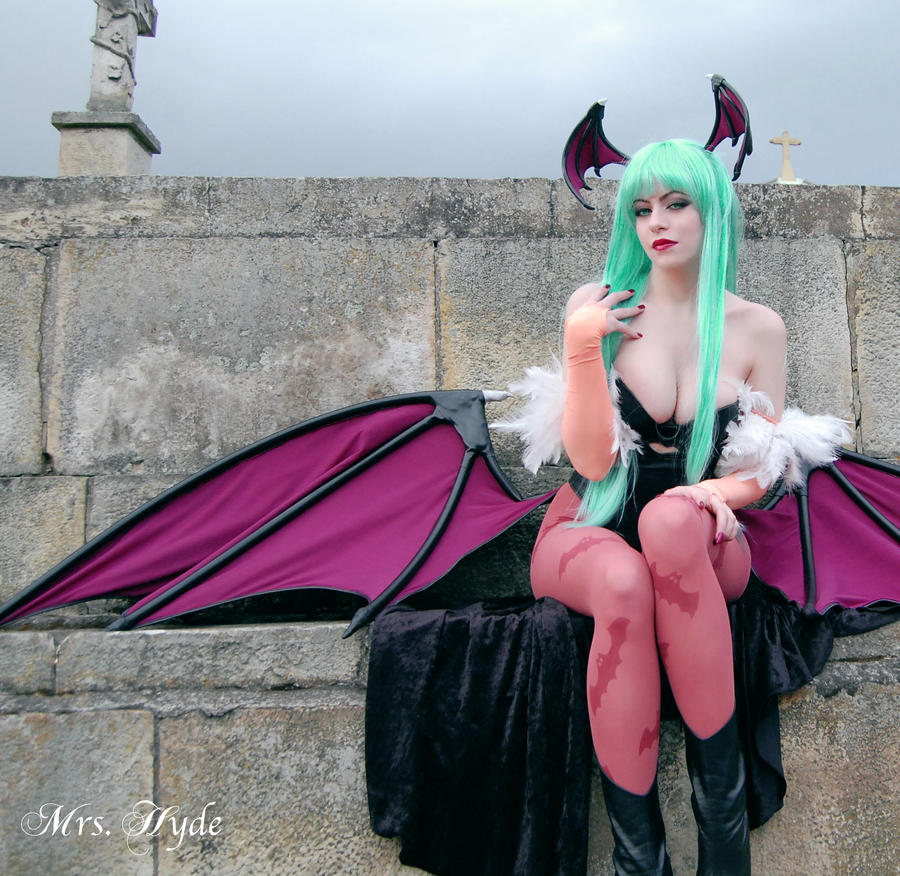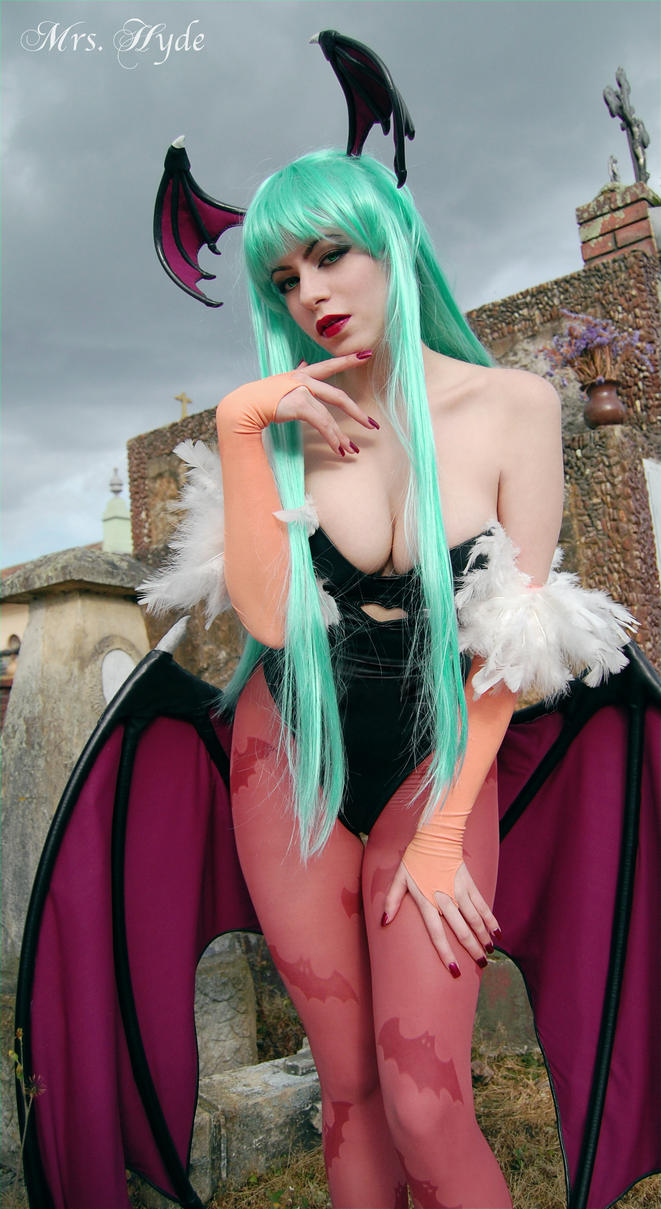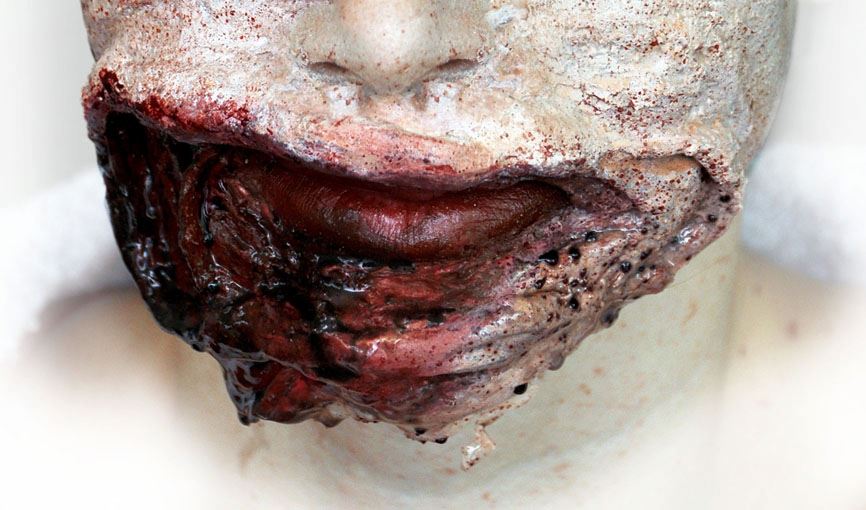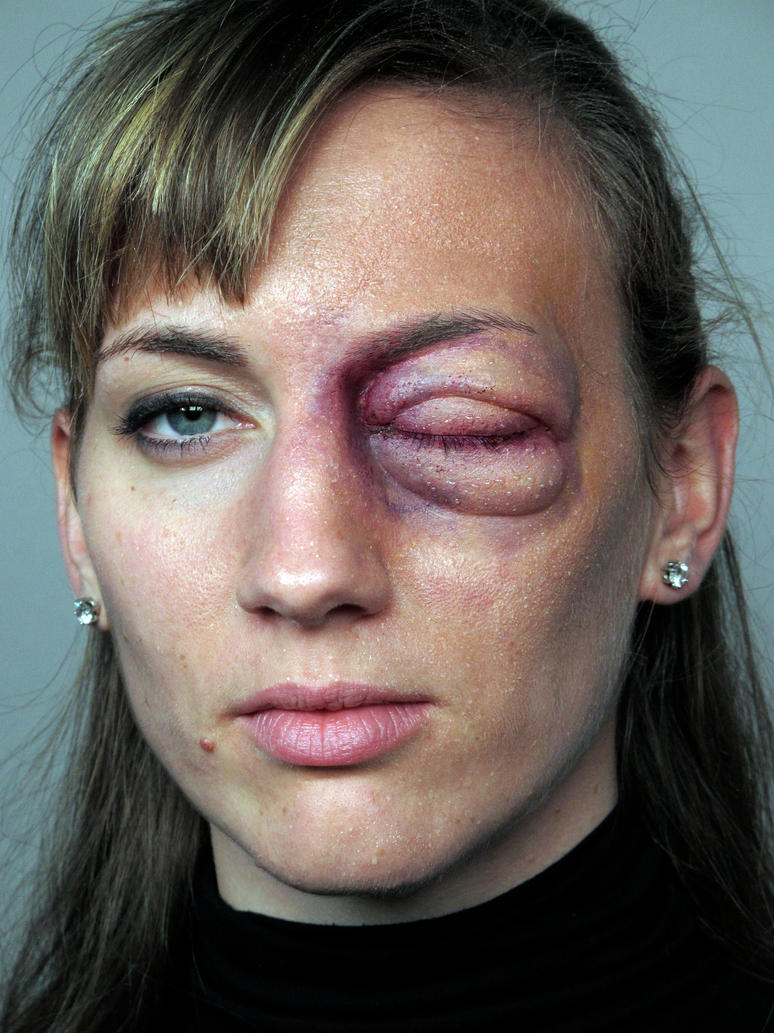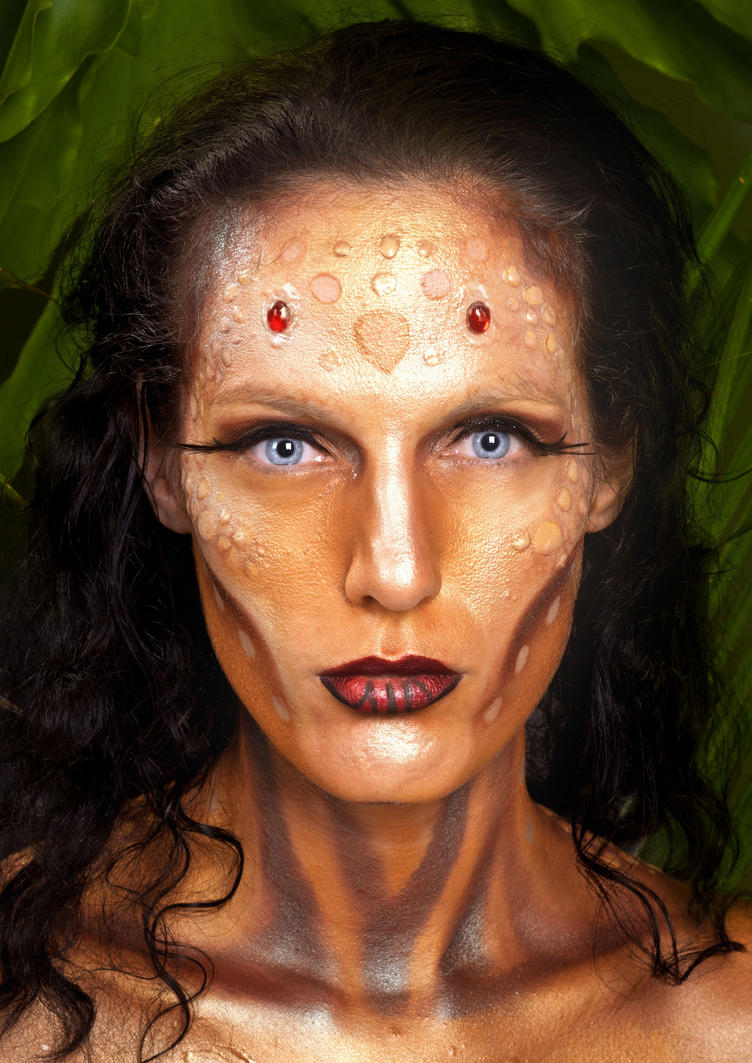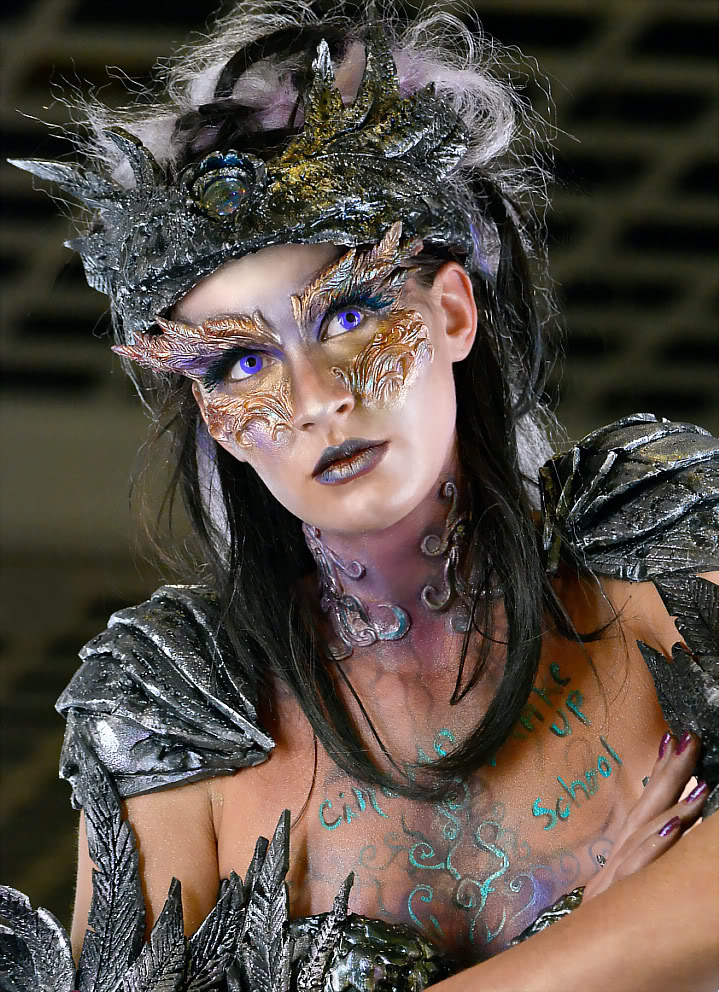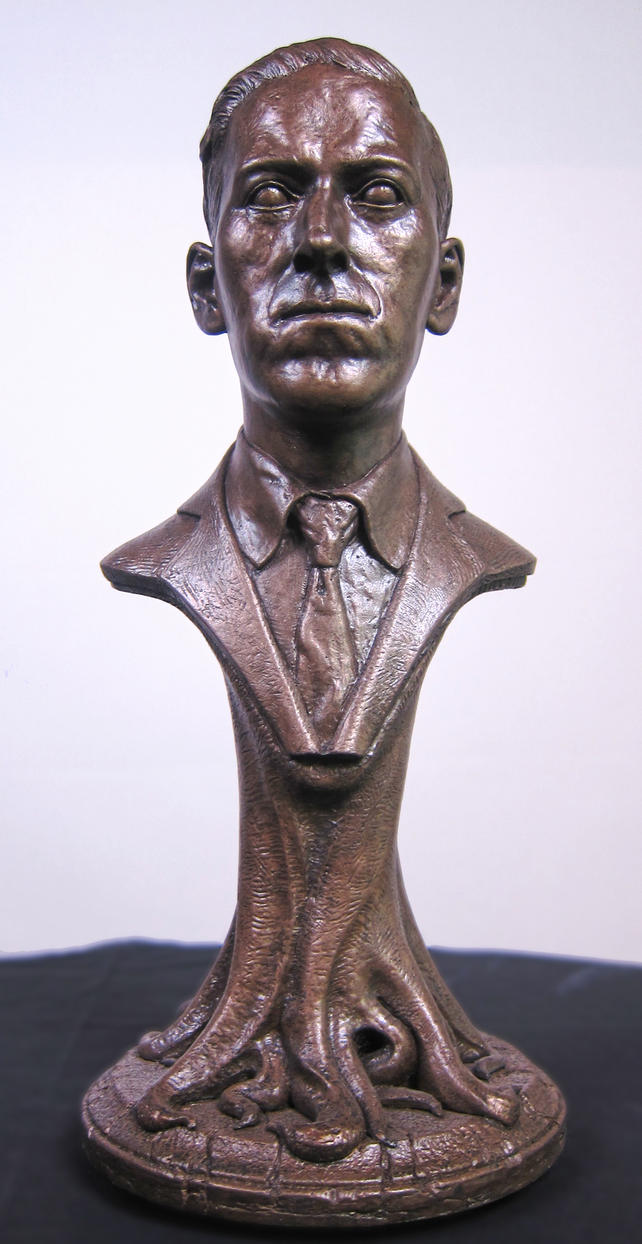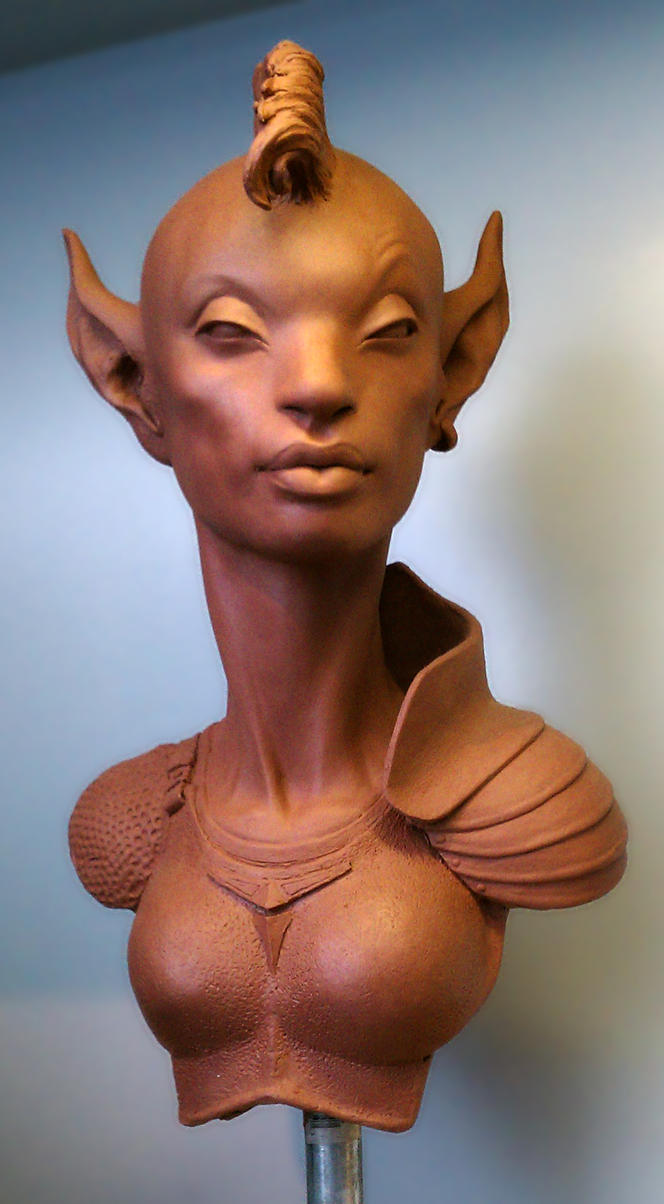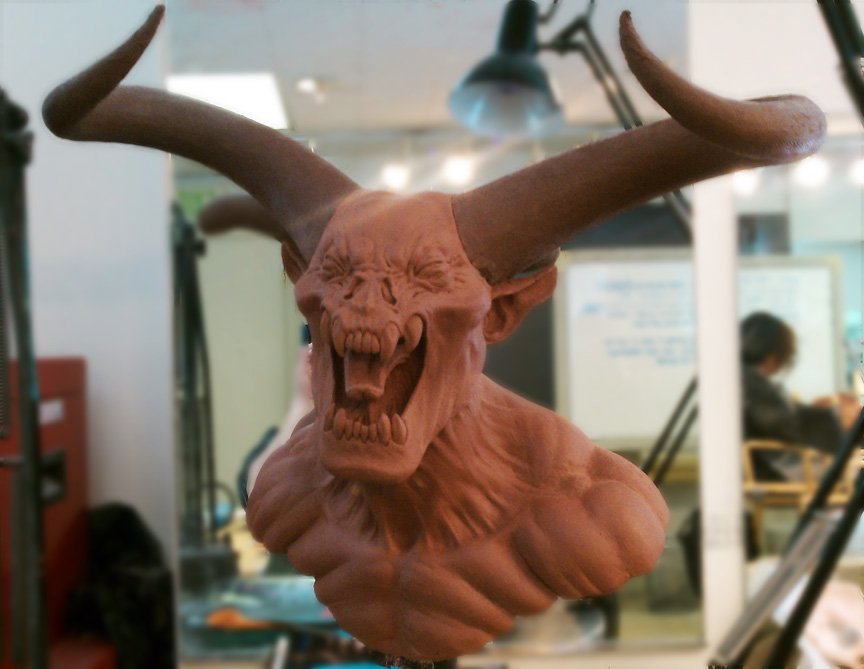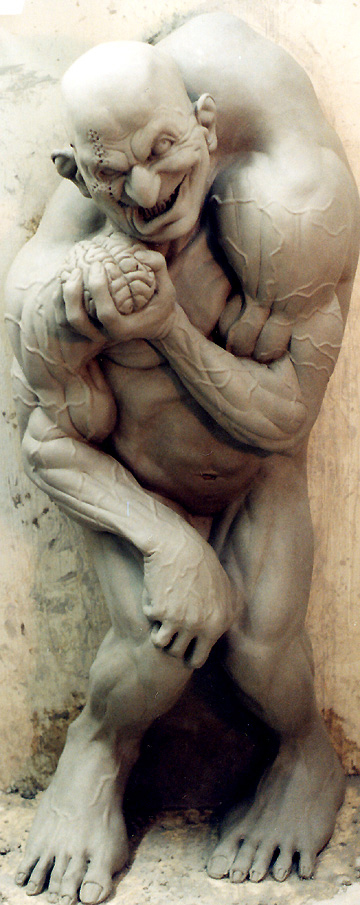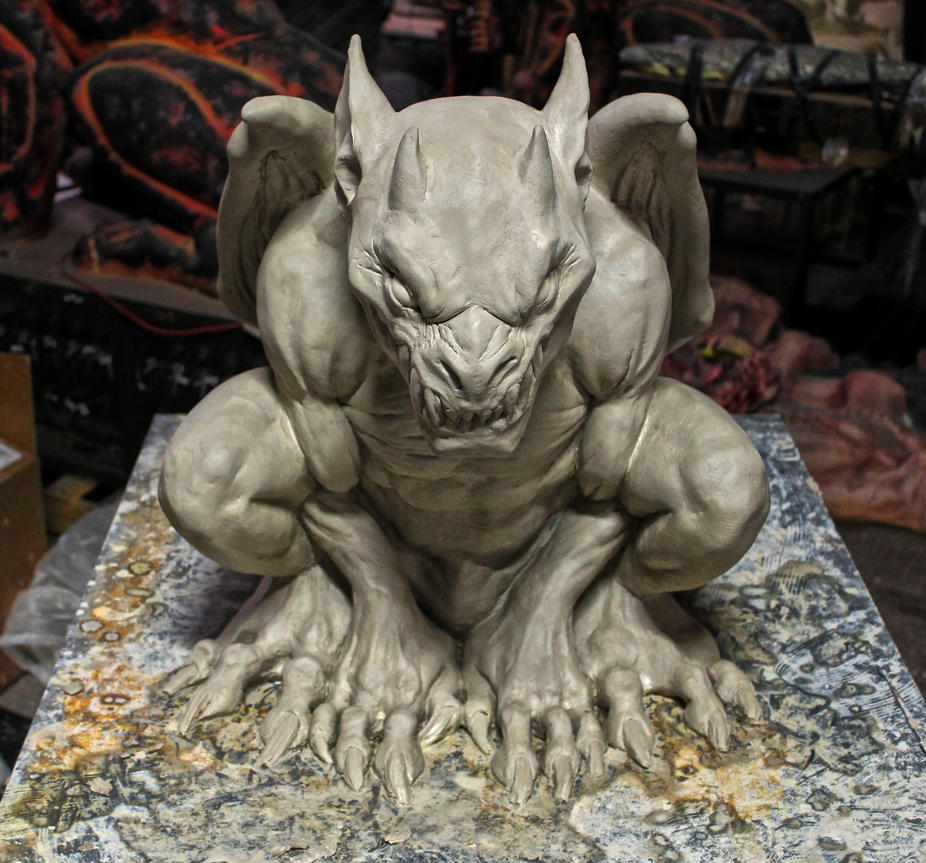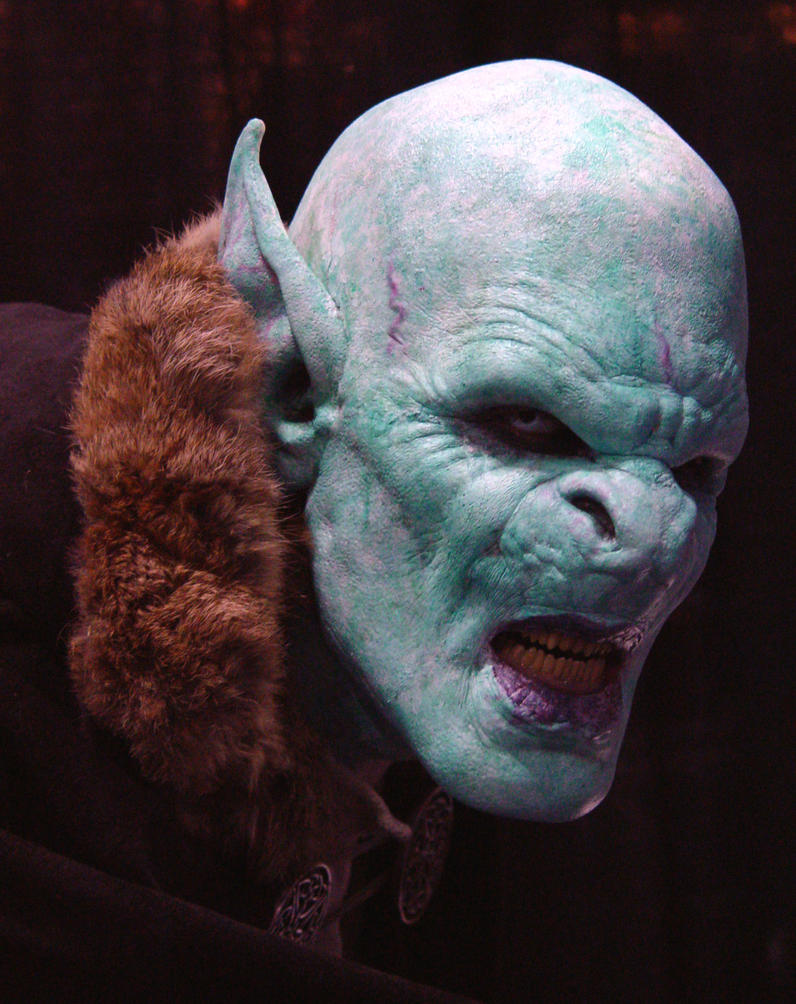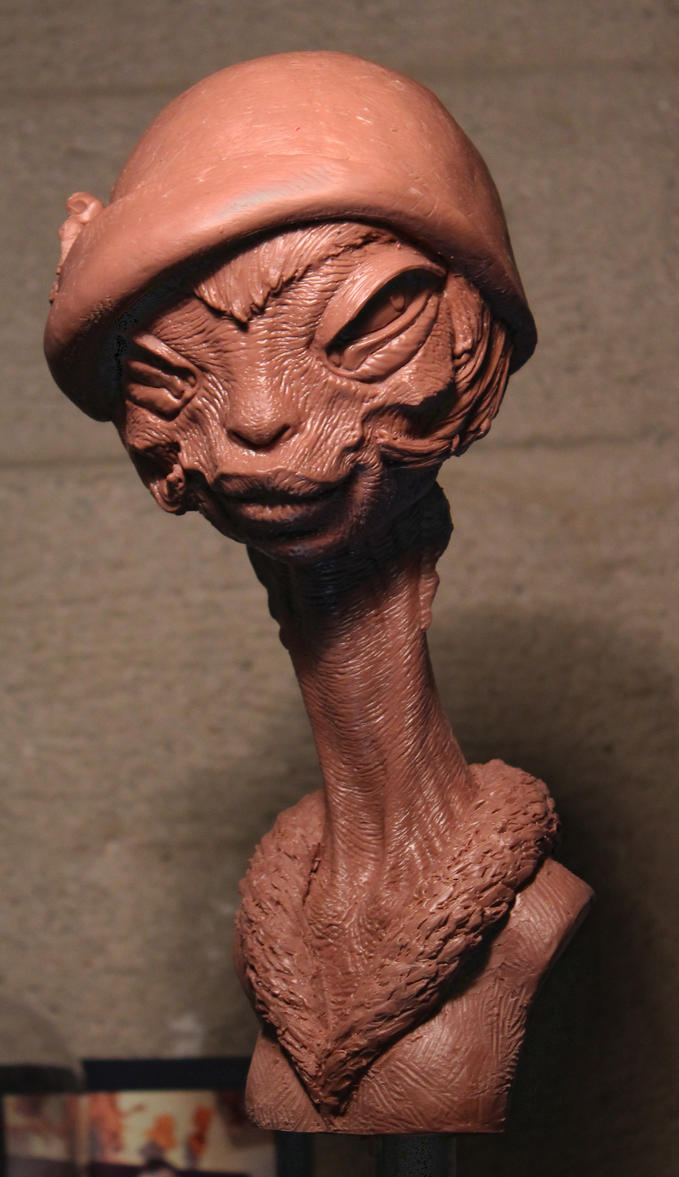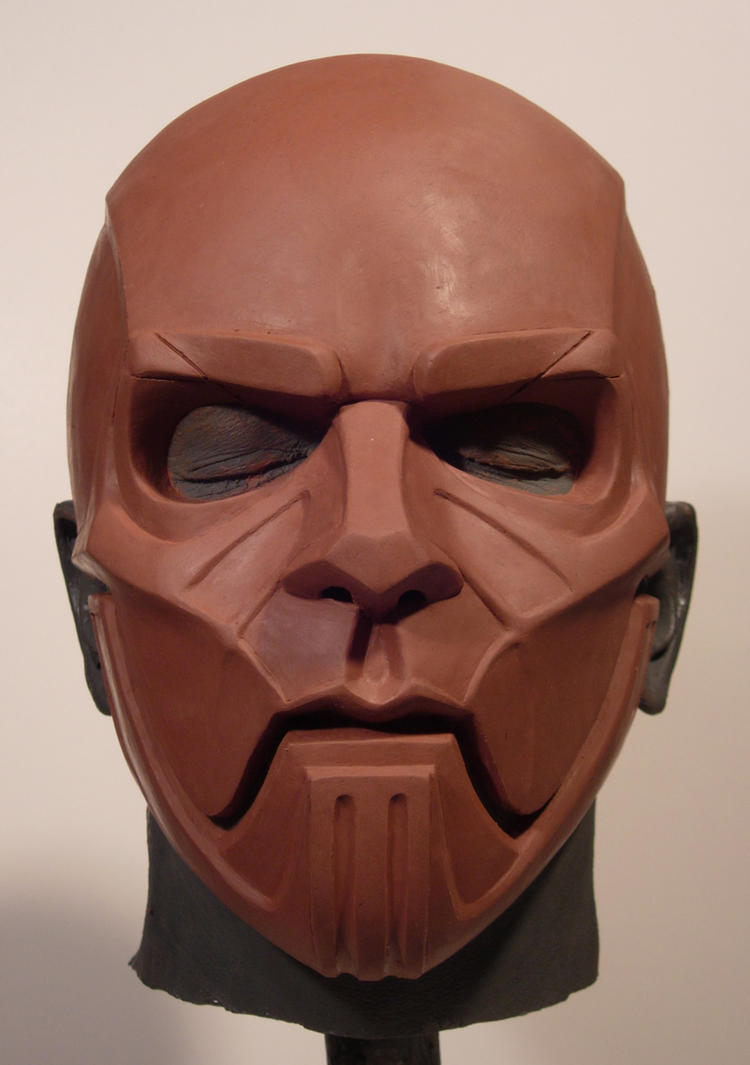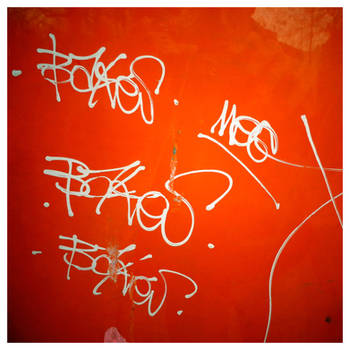Mastering The Magic ofMonster Making
15.7 million fans tuned in for the fourth season finale of the AMC cable channel’s hit series The Walking Dead, making it one of the most watched hour-drama broadcasts in cable history.
More than a mere gore fest, critical approval for the show has come by way of nominations from the Writers Guild of America and the Golden Globes. World War Z (2013) presented The Walking Dead on an epic scale, starring no less a Hollywood Mega Star than Brad Pitt, and has grossed over $600 million worldwide. A sequel is planned. The zombie movie has come a long way from Night of the Living Dead, the weekend movie project shot by George Romero and friends in Pittsburgh in 1968 on a $114,000 budget. Romero’s zombie concept, little-changed from then to now, was at the time reviled by critics as the worst thing to ever happen to the horror genre, but is today considered the genius zeitgeist forerunner of all that was to follow. Questions of pop psychology and sociology aside, one thing is certain…
But with such a growing demand for zombies, needed in greater and greater numbers to fill screens depicting the various takes on the imminent worldwide zombie apocalypse, how is Hollywood managing to supply the putrid zombie pipeline vomiting out these rotting living-dead brain-eaters? What was once the specialty make-up of a handful of Hollywood horror movie make-up artists has now become by necessity a standardized category of the special effects profession—which is currently being taken up by legions of young monster makers. We here present a visit with one such school in this relatively new world of “physical character development.”
Special effects makeup has been a part of movies almost from the inception of popular cinema.
Lon Chaney was the first great master of the physical transformation of an actor to fit an unusual or fantastical role. His silent movie masterpieces of the silent era included The Hunchback of Notre Dame (1923) and The Phantom of the Opera (1925). He created and applied his own creative (and often painful) makeups personally, guarding the secrets of his process like a magician guards his tricks. When Lon died in 1930 the torch was passed to Jack Pierce who was the lead makeup maestro at Universal Studios just as it became the reigning House of Monster Horrors. Pierce created the makeup for Boris Karloff in Frankenstein (1931) and The Mummy (1932) as well as Lon Chaney, Jr.’s The Wolfman (1941).
From the time of Jack Pierce the trade of special effects makeup remained a vocation pursued by individuals inspired by Chaney and Pierce, artists like Rick Baker and Tom Savini, who had to learn their craft largely on their own, there being no formal makeup schools teaching monster making and other special makeups required by horror, fantasy and sci-fi films.
The special effects makeup deficit was finally addressed in 1993...
With the founding in Hollywood of the first incarnation of the Cinema Makeup School (CMS), which has since become recognized as the leader in the genre makeup field, with graduates going on to great achievements critical acclaim at the highest levels. CMS’s longtime Director of Education, Leonard Engelman, was elected the first Governor of the Make-up Artists and Hairstylists Branch of the Academy of Motion Picture Arts and Sciences (the governing body for the Oscars®), and continues his work with the school to this day as a special instructor and chairman of the school’s honors program.






The school’s plan was always simple:
Offer shorter, more concentrated classes; keep all instruction up-to-date with the latest professional methods and standards; and attract top working artists to teach at the school. The results have been impressive. Students have gone on to high-profile jobs with effects shops like Amalgamated Dynamics, Inc.; The Character Shop; Legacy Effects; and assisting well-known artists such as Ve Neill; Steve Wang; Kazuhiro Tsuji; and Joel Harlow. Enrollment continues to grow. The plan remains the same: pair eager students with top established talent, and then teach them the latest methods in a concentrated creative environment.
Cinema Makeup School is yet another example of a special creative need being recognized and then “solved” by artists, visionaries, entrepreneurs—a special breed of creative individuals come together in a single cause.
Eat breakfast. Go to school. Make monsters.
Cinema Makeup School Artists
Interviews
Five top students at the Cinema Makeup School (CMS) are deviantART members so we thought they would be the best source for information about the complexity and discipline around SPFX artistry.
Has what you’ve learned at CMS impacted your other creative work? Sculpting etc?
Midge Odoñez:
Yes it has. CMS taught me to create a full character, not just something that may look cool. I learned how emphasizing certain parts of the anatomy will change the emotion on a sculpt. I also think more about detail and the smaller shapes on the face and body when sculpting.
Has training in special effects makeup enhanced your skills in traditional beauty makeup? Has being a “double threat” resulted in better employment opportunities?
Midge Odoñez:
I came to CMS with a few years doing beauty makeup under my belt, and learning about special effects has made me think more creatively about my beauty makeup. Being a "double threat" has definitely resulted in better employment opportunities, as more employers would rather hire one person who knows how to do both rather than two separate people. It's also good to know in case my creature needs any sort of beauty enhancement.
Will you continue in the makeup field or do you aspire to mastering any of the other aspects of movie production?
Midge Odoñez:
Working in the makeup industry has been a dream of mine for years, one that I will continue to strive for, but being at CMS has opened me to exploring other facets as well. I want to get into making dolls and collectables, and after taking the Zbrush class CMS offers, I want to do more conceptual work as well.
What is the status of “Harbinger Down”, the Practical Creatures Effects Kickstarter project?
Do you think special effects makeup produces a better result than CGI every time? Is CGI too often automatically the first choice?
Jordan Morris:
I'm on both sides of that conundrum. Honestly, I feel the mix of the two mediums have given the best results in recent days. Here I'll bring up the Pale Man and the Faun from Pan's Labryinth. It's not just makeup FX! Let's not forget miniatures, models and other practical effects as well! (Go watch some behind the scenes for Nolan's films... you'll see!)
As far as CGI as a first choice... it's hard to judge. There's many reasons for choosing CGI over practical for the set. Mostly monetarily reasons which falls onto studio pressure. However, I honestly believe that if there's something tangible right there on set you will get a better performance from your actors, your directors, your cinematographers, everyone.
Has training in makeup at CMS enhanced your drawing skills in any way?
Jordan Morris:
In a strange way, yes. Especially with sculpting appliances and maquettes. Working in 3 dimensions and making sure that a form fits and moves on a face... it can change the way you think about how anatomy works, not just how it's rendered. I've also found myself becoming more painterly now that I think more in shapes and planes. Better understanding how light hits a form. I still need to figure out environments though.
What do you see as the next big advancement in the field over the next 10 years?
Jordan Morris:
I think the only step in the 'future' I've ever really pondered would be something like 3D printed appliances. I haven't a clue how that would work but it would be pretty awesome!
How has makeup training at CMS enhanced your costuming skills?
Melissa Jimenez:
Being a trained makeup artist has opened up a lot more possibilities when it comes to costuming. I’ve always wanted to work as a special effects makeup artist but being raised and born in Colombia never really allowed me that possibility, so costuming, cosplaying and character creation in general was my attempt at getting close to this craft.
Now with the combined knowledge of costuming and makeup I’ve been able to develop characters in a more complete way, since I get to be involved in more areas of the creation process and I’ve even been able to get more work because of my specific skill set.
Would you recommend CMS to your fellow Cosplayers?
Melissa Jimenez:
If you’re interested in makeup, absolutely. Not everyone that cosplays wants to get involved in makeup, since they’re more interested in the costuming side of it. But, for me, cosplaying and doing zombie makeups on myself and on friends for Halloween was my attempt at getting closer to my dream career—a career which at several points in my life I didn’t even believe I would be able to pursue. Luckily enough, costuming and cosplaying lead me into a natural transition over to makeup.
I had to work really hard to be able to move from Colombia to LA to pursue my dream, and I still have to work very hard to be able to do makeup for a living. It’s a very satisfying line of work and, at the end of the day, instead of working at an office I get to make monsters, play with clay and paints, work in movies and make the creatures that live in my imagination come to life; what could be better than that?
Does knowing you can produce superior effects makeup free you creatively when you are planning a costumed character?
Melissa Jimenez:
Definitely. For me creating a character not only involves thinking of the specific look and features that it might have, but also figuring out how that character would choose to dress itself or what attire would make sense in its everyday life. There’s a very good reason why the makeup and wardrobe department always work together in movies. Attempting to create a complete realistic being will always require a cohesive overall look; so personally, having knowledge in both departments allows me a lot of creative freedom.
Has what you have learned at CMS help you get modeling jobs?
Melissa Jimenez:
Of course, thanks to what I learned I model all the time, I model figurines out of clay, monster busts, creatures…
All jokes aside, modeling for me was never a set career; I always enjoyed the creative side of it, which for me involved doing makeup, creating outfits, props, set design, etc. It was fun and thanks to it I met a lot of great people but I never saw myself doing it full time.
Nowadays I’m lucky enough to be able to work as a professional makeup artist which between being on set, working at special effects labs and developing personal projects, allows me very little time for anything else.
Israel played such a big part in “World War Z”. Is there as much interest in the zombie craze in Israel as there is in current American culture?
KC Mussman:
It seems these days that we are craving for zombies more than they crave for us, and yes-indeed even in smaller parts of the world such as Israel (because lets face it zombies are COOL!)
The Cinema of Israel is mostly traditional and comprised of mainly classic genres such as docu-dramas and military. Therefore I am not surprised that a new generation of film makers rose recently, pushing the limits and introducing Israel's big screens to horror, but still there is a long way to go.
Was becoming a working SPFX make-up artist the impetus behind your transplanting yourself in Hollywood?
KC Mussman:
When I got into makeup I started finding myself working on sets hands deep in (fake) blood and the deeper the blood the more I realized that I wanted to make movies!
I wanted to learn the real deal- and due to the limited resorces and knowledge in my country I knew i had to look elsewhere and Hollywood was just the place to get started!
Was there one movie in particular that made you decide you wanted to be a SPFX make-up person?
KC Mussman:
Many movies have inspired me, but my strongest inspiration comes from books. with a book anyone can become an artist- envisioning a written word and translating it into a character or a monster or a wondrous land. I am very influenced by Neil Gaimen, George RR Martin, HP Lovecraft, Alister Reynolds, Tolkien, Roger Zelazny, Issac Asimov, Richard K Dick, JK Rowling, Robin Hobb and many many more.
Your “glamour” make-ups seem to focus primarily around exotic and or horror-themed eyes and mouths. Are you a big fan of otherworldly seductions and dark sensuality?
KC Mussman:
Otherworldly seductions? Haha I guess you can say so. I love to focus on emotion, especially with my lip and eye art, in every makeup I emote a different feeling, I try to bring out conflict and contrast, to show the beauty of the beast.
I always knew I wanted to be an artist when I grow up. What kind I couldn't say but I knew it would be art.
When I was 6 years old my mother took me to audition for my first fine art school. there was a table with some drawl items- old bottles, a tin box, some books and a cow skull. I was given a set of pencils, charcoal and an aqua palette full of colors.
I did not touch the pencils nor the charcoal but went straight for the colors and used everyone of them. I painted a fiery sunset over a desert oasis with the cow skull resting beneath a palm beside the water. when we where done they set all our drawings out and to my surprise no one but myself has used any color, all I saw where copies of bottles and tins and books.
I was not accepted to that school, They said that I didn't follow the rules and that If I wanted to fit in I would have to paint what i was told like everybody else. Since then I have been accepted to several art schools and colleges, always in search to improve my skill-set and techniques but keeping true to myself and my vision.
In makeup I found the applicability of my art skills, and how I could use them to my advantage to transform Idea into Material, turning fantasy into reality. It amazes me to see my Imagination come alive and the happiness it brings to others, there is no other way to describe it but a mix of self accomplishment and excitement towards dreaming up the next living creation.
Tell a little about your latest work.
KC Mussman:
From monster movies to Japanese pop videos I defiantly am enjoying my job, not just creating creatures and corpses but also being part of the team and watching that movie magic come alive with my own eyes and knowing I had something to do with it.
On my last zombie film "6hrs" by Rhona Horiner Rosner we had around 30 zombies shambling about, it was a hot August day and we had a "corpse room" where the actors would come and lie down on the floor to rest in the air conditioning while I applied touch ups- it was so creepy and funny how they all looked so real.
On the set of Bass Orchestra's "My Zombie Valentine" we had over 50 zombie extras that got so excited about being zombies they took a stroll down the main street and terrorized cars and startled by passers.
A couple weeks ago we where shooting car chases and ninja fights in China-Town, Its always very exciting.
Which actor/actress would you like to turn into a zombie or vampire or alien (with or without infected space parasite bites)?
KC Mussman:
Tilda Swinton, not only is she an incredible actress but she has such a variety of features along with an amazing bone structure that has many possibilities for a sfx makeup. I would love to turn her into a dark and beautiful celestial being.
What advice do you have for young deviants wanting to break into the SFX field?
KC Mussman:
DO IT. If you want to make monsters—go out and make them! Get online—research your options, talk with other SPFX artists and get inspired.
Interview with
Lee Joyner (JoynerStudio)The current leader in charge of propelling the school to even greater heights.
Why did it take so long for Hollywood to recognize that formal training in special effects makeup was almost non-existent, yet obviously becoming a more and more in demand specialty?
Lee Joyner:
There aren’t actually very many training schools for this type of special skill. Cinema Makeup School is actually one of the few that train in silicone gel filled appliances, creature maquette and ZBrush sculpture, moving blood flow (such as cutting throats, blood cannon), and combining all of that with the other classes such as airbrushing, beauty, hairstyling and others makes us quite a formidable facility. We don’t advertise very heavily, so people who are looking to do this for a living search us out due to our high number of graduates that are alums of Face Off, our instructors who are considered the top in their fields and our commitment to providing a high level of technical and artistic quality to our instruction.
What has been the response to your school by the maverick outlier makeup artists like Rick Baker and Tom Savini?
Lee Joyner:
We have great respect for Tom for his contributions to the field with his book he wrote back in the ‘70s. Rick Baker is considered the new Godfather of special makeup effects, having had the torch passed down to him by the legendary Dick Smith. Rick and Dick are friends of CMS (Dick sponsored our first Legends of Makeup Scholarship, of which Face Off star Wayne Anderson was the recipient), and we’re proud to call them thusly. In fact, when Rick received his star on the Walk of Fame, he asked if we could bring out our students in full fx makeup to help liven up the event, and we were thrilled to participate! Since we’re just a 5 minute subway ride from where his star was, we all went out (myself included, and how could I not!). It was a rainy day, but the opportunity to see the makeup legend get his star on the Walk of Fame, along with legends such as Guillermo del Toro (with whom I worked on his first American film Mimic) and John Landis, well, it was a day to remember. I would also be remiss if I didn’t mention Jack Pierce, who is my personal makeup hero. Jack created the original Wolfman, Frankenstein’s Monster, The Mummy, and most of Universal’s classic line of Hollywood monsters. I was thrilled to be able to preside over the dedication of our Jack Pierce Gallery, where we showcase work from talented graduates and legendary makeup artists, such as 2 full sized silicone mermaids from Pirates of the Caribbean: On Stranger Tides (2011), donated by Joel Harlow.
Do you see a problem with a certain “routinization” of certain makeups (e.g. the current zombie look-alikes glut), or do you think the creative impulses of makeup artists will continue innovation despite producers’ “standard” requirements.
Lee Joyner:
There will always be innovation in the fx makeup industry. That’s what we love the most, to be honest. We’re problem solvers. We’re hired to make something that sounds impossible in the script become a reality, on time and on budget. It’s the most exciting part of the job for me. We’re artists, magicians and mad scientists, all wrapped up in one. Sure, zombies can be similar, but compare the feeling of zombies across the spectrum: from Walking Dead to 28 Days Later, from the original Day of the Dead to Warm Bodies. There are huge differences of creative ideas there. Compare werewolves! Look at Dog Soldiers and American Werewolf in London, then take The Howling and The Wolfman. The creative freedom makeup artists gets is based on their passion and their ability to convince the production team that their design is what is needed for the project! We teach our students to stand up for their ideas and their designs, but to also listen and be flexible. Being able to subtly manipulate the client to believe that what you’re showing them is what they wanting, and indeed, needing.
Lee started sculpting at the early age of 12, drawing for years before that, after being raised reading authors Madeleine L'Engle, H. P. Lovecraft, Stephen King and Piers Anthony, as well as the fantasies from Watership Down to Duncton Wood and many others. His brother raised him on Dungeons and Dragons in the 70’s, which moved into the rpgs Chill and Call of Cthulhu (due to his love of horror). This love of escapism and fantasy worlds naturally led to all things video game (he is still an avid gamer today). His obsession with fantasy and creature art led to Lee attending Savannah College of Art and Design on scholarship for Illustration, then traveling the country to various other colleges and majors, ending at the Art Institute of Pittsburgh for Industrial Design.
After working with various animatronic firms (trying desperately to not have to work in the real world) from Florida to Tennessee to Michigan, moving from one job to the next. Lee ended up in Los Angeles, creating and contributing to some of Hollywood's iconic creations, from Mimic to Godzilla, and Star Trek DS9 and Voyager to Stargate SG-1. He started teaching at Cinema Makeup School to make ends meet between industry jobs, and eventually became one of their directors. Now, semi-retired from the industry, Lee focuses on Cinema Makeup School and his creature concept design, bringing to life creatures that are an amalgam of books, films and illustrations and paintings that have influenced his psyche and made him who he is today.
What are the benefits of your school to the young artist interested in special effects makeup beyond the actual training in makeup skills?
Lee Joyner:
There will always be innovation in the fx makeup industry. That’s what we love the most, to be honest. We’re problem solvers. We’re hired to make something that sounds impossible in the script become a reality, on time and on budget. It’s the most exciting part of the job for me. We’re artists, magicians and mad scientists, all wrapped up in one. Sure, zombies can be similar, but compare the feeling of zombies across the spectrum: from Walking Dead to 28 Days Later, from the original Day of the Dead to Warm Bodies. There are huge differences of creative ideas there. Compare werewolves! Look at Dog Soldiers and American Werewolf in London, then take The Howling and The Wolfman. The creative freedom makeup artists gets is based on their passion and their ability to convince the production team that their design is what is needed for the project! We teach our students to stand up for their ideas and their designs, but to also listen and be flexible. Being able to subtly manipulate the client to believe that what you’re showing them is what they wanting, and indeed, needing.
We train them in set etiquette, terminology, breaking down and bidding on scripts, as well as balancing the makeup training with our advanced concept classes, such as Creature Maquette Sculpture, ZBrush Digital Sculpture and Digital FX Makeup Design, not to mention our Advanced Beauty Theory. They also have access to our job emails and seminars and events for the rest of their lifetime, and can come back and use any available space at our facility for practice makeups, production meetings, equipment usage, as well as hit up any of our staff with any industry advice they need. We’re always available to help our graduates!
What was the turning point when you knew your vision for CMS was becoming a reality and success was at hand?
Lee Joyner:
I would say it was in the early 2000’s when I instituted silicone gel filled appliance training at the school. That’s what they use today to create realistic prosthetics that have beautiful movement and translucency, seen in Benjamin Button, Norbit, Star Trek, etc. At that time no other school was teaching it. I kept waiting for other schools to catch on, but they never did. The reason was it was difficult and expensive. Their attitude was “why do something if we have students and doing well?.” Cinema Makeup School wasn’t about the status quo. We were, and are, interested in the furtherance of the craft, keeping it alive, and doing what we can to increase its reach and use. Training today’s new generation of makeup artists requires cutting edge techniques and technology. We’re adjusting our curriculum constantly to reflect what is required in the field and to help our clients achieve that edge over the competition. When I realized the other makeup training facilities were not going to change their attitude, I knew we could achieve anything we set our minds on, and we have!
What is now your greater ambition for the school and its impact in the industry?
Lee Joyner:
Our goal at CMS is strive to attract the most passionate, creative and artistic makeup artists the world has to offer. I see as our duty to fill the void left from the old apprentice system. We need to instill in these creative monsters a love of the craft, the knowledge of who paved the way before them, and the tools to keep improving their makeup and design skills every time they pick up a brush or a sculpting tool.
Is there a general acceptance of or prejudice against genre makeup artists in the traditional Hollywood film and TV makeup community?
Lee Joyner:
We always recommend a makeup artist be as well rounded as possible, as there are not always genre jobs available. That knowledge of beauty and fx makeup tends to reduce any prejudice, since they can usually speak on the same level with other makeup artists. In regards to general prejudice, no, in fact it’s usually the other way around. Who doesn’t love blood splatter day on set? Everyone gets to wear their rain gear and be in the middle of a gore explosion! As I always say, makeup is makeup is makeup. A makeup master like Joel Harlow, who has created Johnny Depp’s amazing transformations for films like Alice in Wonderland, Pirates of the Caribbean: On Stranger Tides, The Lone Ranger and Dark Shadows, also has to create his subtle looks and perform his beauty makeup as well. We’re also incredibly fortunate to have someone like Joel as an instructor here at CMS, when he has the time between working with Johnny.
What do you see as the online future of the CMS? How are technological advances evolving the possibilities of teaching and learning effects makeup?
Lee Joyner:
There are incredible opportunities for online instruction! Hollywood has opened up to the entire world the majesty of fx makeup with shows like Face Off (Cinema Makeup School has had 16 graduates, so far, having appeared on Face Off) and films like The Lord of the Rings, The Hobbit, and of course countless others. Now, people are searching for schools that can provide that training and knowledge. The internet has enabled us to create a bridge, giving those passionate about becoming fx makeup artists an avenue to make that dream a real event. The best way to train is in person, standing next to your mentor, having them guide you step by step. The ability to have someone show you in person what needs to happen to turn your makeup from ordinary into extraordinary is crucial. That being said, we also share telepresence with other schools around the world for seminars, and do have a library of DVD instructional training that we will be making public for sale.
Lee Joyner's
DEVIANTS
To Watch
“Nisachar’s use of color and composition with such powerful emotion create beautiful tapestries of illustrative art reminiscent of Babylonian murals from millennia past. His MBX Vol 01 20 Battle Kauravas was what keyed me in to his work initially, and I have a rotating desktop with his work daily to keep reminding me that such art exists.”
—Lee Joyner
“What more can I say. Riccardo’s usage of traditional pen and brush in such small spaces astounds me with the amount of detail he creates in his powerfully moody tableaus. I’ve never seen such a classical treatment of such strange and dark subject matter. To me, he’s channeling da Vinci. There. I said it.”
—Lee Joyner
“Ellen June creates such a wonderful flow of positive and negative space in her sculptural designs. Her Petal Deer and White Dragon are just a few of the pieces that strike me deeply, and if you stare at them long enough, can bring you to tears.”
—Lee Joyner
“Mike Dubisch and his usage of color and absence of color to create otherworldy creatures is masterful. His Black Velvet Necronomicon is one of my most treasured books. His knowledge of tentacles, webbing and strange liquids is deep and disturbing, but in a way that makes you want to snuggle up to the page and sleep long and deep.”
—Lee Joyner
“Jeff Simpson puts his character design first and foremost, fusing the technical simplicity of Syd Mead with the warm focus of Zdislaw Beksinski. Combine that with a talent for bringing forth the imperfect spark of real personality and you get a beautiful package of character art that inspires one to simply create.”
—Lee Joyner
Questions
For the Reader
- Have you had the experience of having a particularly frightening horror movie being ruined when the monster finally revealed isn't so scary? Conversely, do you think horror movie makers today rely too much on the extremely effective make-ups and put too little into making the actual stories scary?
- What was the first memorable halloween mask or make-up your ever wore? Did you like the sensation of being a scary monster?
- What's the best horror or fantasy make-up you've ever seen in a movie?
- Which movie or TV show has the best (most convincingly rotting, etc.) zombies?


